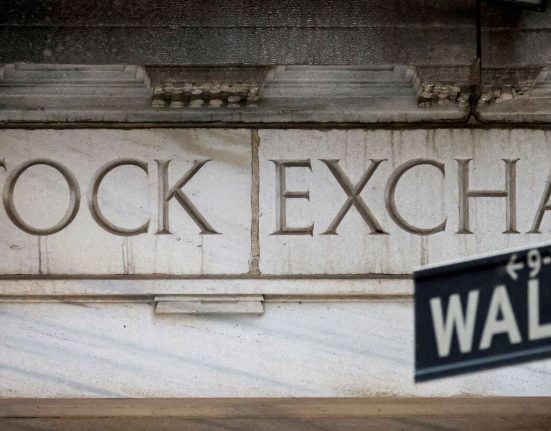Lukas Strobl: Since we’ve exited the zero rate era, bonds are back in demand. One problem with bonds is that their high minimum subscription all but excludes smaller and retail investors. Bond funds are one popular way around that, and specifically fixed-term bond funds have seen massive inflows in the past year. I’m here with Morningstar fund analyst Shannon Kirwin, who has taken a look at this trend in a new report.
Shannon, first off, what is driving this massive influx of money into these fixed term bond funds?
Shannon Kirwin: Yes, it’s true that this category has been immensely popular over the last year and that popularity has actually continued into the current year as well. So, we saw this category receive about €60 billion in net inflows in 2023. In 2024, Q1, we saw another €13 billion coming into the category, and that stands in stark contrast to other asset classes in other category groups that have mostly seen net outflows. So, if you look across equity funds, across asset allocation funds or alternatives, all of these larger category groups saw net outflows both last year and in Q1 of this year. By contrast, we’ve seen positive inflows into fixed income and those have been dominated by flows into these fixed maturity or fixed-term bond funds.
The only category, interestingly, that actually had more inflows in 2023 was money market funds. And overall, what this picture is telling us is that investors are still very timid about taking market risk. They want to take advantage of those higher interest rates that central banks have now started offering, but they don’t actually want to get out there and actually put their money into a stock fund where you’re actually exposed to the market ups and downs. The way that a fixed maturity bond fund works is in a sense it kind of tries to imitate, as you alluded to in your opening, the structure of a single bond. So essentially, what will happen is the manager will select a basket of bonds that all mature around the same time, maybe a year from now, maybe three years from now or five years. Investors will put the money in the fund and then their money is essentially locked in for the period of the bonds’ maturity. They collect the coupons as interest during the lifetime of the fund. And then when the bonds reach their maturity date, that principal is returned back to the investors.
So, what I think investors like about these strategies is that you’re really insulated from the market’s ups and downs. If there is a huge sell-off in the bond market, your manager is actually never forced to sell a bond into that weak market and lock in a capital loss because it’s just a buy and hold strategy. So, investors really like that they feel like they know what they’re getting into. The yield is often advertised in the prospectus. And so, an investor feels like they’re locking in a given yield for a certain period of time. However, there are drawbacks to the structure as well. So, as I pointed out, you’re locking up your capital for the period of the fund. If there is a big rally on the market and as an investor, you’d really like to be able to jump in and take advantage of that, you can’t, because a lot of these funds actually charge very punitive early withdrawal fees. So, you’re actually paying a big penalty if you withdraw your money before it reaches its maturity date.
LS: Speaking of safety – we’re talking about corporate debt here, not treasuries – how risky are these funds?
SK: Yeah, that’s a really important thing to point out as well, I’m glad you asked that question. A lot of investors may mistake these bonds for the equivalent of a fixed-term cash deposit at a bank. And that’s a very, very misleading characterization of these strategies. We’ve actually seen anecdotally that some banks even kind of market these products this way to investors, which is extremely misleading. As you point out, most of these funds do have very significant exposures to corporate bonds. And corporate bonds carry credit risk. These are not risk-free products. They are insulated from market ups and downs in a way that regular bond funds are not. But that’s not to say that there are no risks in these products.
And in fact, looking at the underlying credit quality, which is a measure of essentially what the risk of a default occurring in the portfolio is, we see that there’s a non-insignificant exposure to high-yield or junk-rated bonds within these strategies as well. The median fund in Morningstar’s fixed maturity bond category has about 20% exposure to high-yield or junk-rated debt. And if we look at the history of this asset class, there have been periods in time where there have been noticeable default exposures among some of these strategies. In 2020 and 2021, we saw several of these strategies run into problems because they had sought to take advantage of seemingly attractive higher yields in the emerging market corporate bond space. And a lot of funds actually had to stomach very significant capital losses when they had exposures to Chinese real estate developers, which actually defaulted. And that was very painful for investors in those funds.
Though I think it’s important to point out that’s not the typical experience that investor will have in these funds, especially funds that have focused on largely investment-grade debt. On average, the funds in this category have actually slightly outperformed equivalent funds in the Euro corporate bond category over their lifetime. But it’s incredibly important to point out that these credit risks do exist, and investors need to really pay attention to what’s actually in their portfolios.
LS: And there’s been quite a bit of geographical divergence in these funds’ fortunes, correct? In Europe, they’ve done fairly well.
SK: Yes, that’s true. Compared to their Asian counterparts – so we actually looked at the broader cross-border universe for these strategies. The funds that I mentioned earlier that had the most exposure to Chinese real estate developers, for example, those will often have been funds that were marketed towards Asian investors. Many were domiciled in Singapore or Taiwan. Over the maybe 15 years that this asset class has really existed, we’ve actually seen European-domiciled funds greatly outperform Asian-domiciled funds. And it’s because of the risks that typically they’re taking.
LS: Now, you briefly touched on fees earlier. That’s a big one here because we’ve seen the beginning of an emergence of ETFs in the fixed term bond fund space. Do you see potential for these ETFs to steal the lunch of active managers in the long term like we’ve seen in equities?
SK: Yeah, I think the entrance of ETFs into this universe is actually really interesting. One of the major drawbacks within this category is that fees have historically been very high compared to what you’re actually getting. So, these are buy and hold strategies. There’s not a lot of active management happening. There’s not a lot of administrative overhead or costs. And yet, the typical fund in the fixed maturity bond category actually charges a higher fee than the typical fund in the Euro corporate bond category. There’s really no justification for that. And so, these ETFs charge incredibly low fees. Another advantage that they have is that they’re very diversified. So yeah, I think they offer a lot of the things that investors are looking for at a much, much more attractive price point.
LS: Looks like this will be a very dynamic category of funds in the future. You should all read Shannon’s latest report in the Morningstar research portal. Thank you for all these insights, Shannon. For Morningstar, I’m Lukas Strobl.







